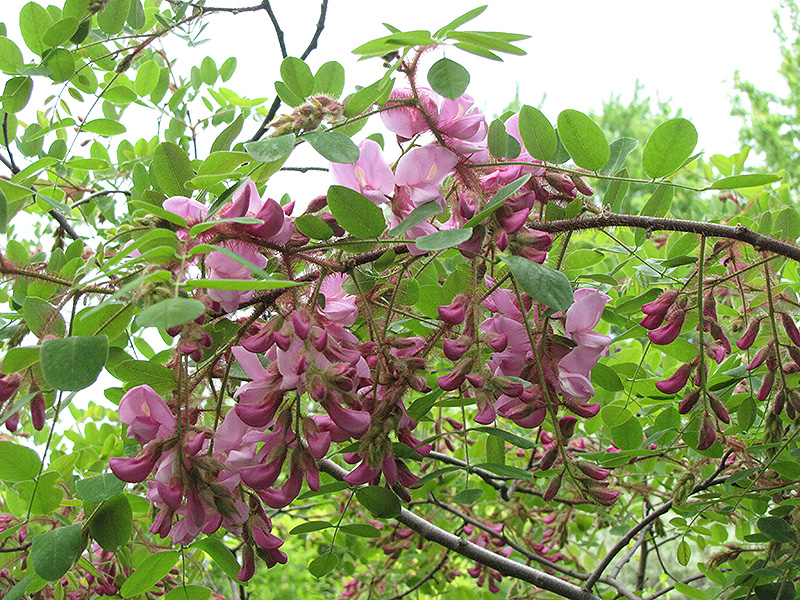Height: 10 feet
Spread: 15 feet
Sunlight:
![]()
Hardiness Zone: 4b
Other Names: Rose Acacia
Description:
A large shrub variety with fragrant and very showy chains of rose-pale purple flowers in spring; branches, stems and fruit are stiffly hairy; performs well in poor soils; tends to sucker and form colonies, good for large-scale naturalizing
Ornamental Features
Bristly Locust has chains of lightly-scented lilac purple pea-like flowers with rose overtones hanging below the branches in mid spring. It has green deciduous foliage. The oval pinnately compound leaves turn yellow in fall. The fruits are showy purple pods displayed in mid summer.
Landscape Attributes
Bristly Locust is a multi-stemmed deciduous shrub with an upright spreading habit of growth. Its relatively fine texture sets it apart from other landscape plants with less refined foliage.
This shrub will require occasional maintenance and upkeep, and is best pruned in late winter once the threat of extreme cold has passed. Deer don't particularly care for this plant and will usually leave it alone in favor of tastier treats. Gardeners should be aware of the following characteristic(s) that may warrant special consideration;
- Suckering
- Insects
- Spiny
Bristly Locust is recommended for the following landscape applications;
- Accent
- Mass Planting
- General Garden Use
Planting & Growing
Bristly Locust will grow to be about 10 feet tall at maturity, with a spread of 15 feet. It has a low canopy with a typical clearance of 1 foot from the ground, and is suitable for planting under power lines. It grows at a fast rate, and under ideal conditions can be expected to live for 60 years or more.
This shrub should only be grown in full sunlight. It is very adaptable to both dry and moist growing conditions, but will not tolerate any standing water. It is considered to be drought-tolerant, and thus makes an ideal choice for xeriscaping or the moisture-conserving landscape. It is not particular as to soil type or pH, and is able to handle environmental salt. It is highly tolerant of urban pollution and will even thrive in inner city environments. This species is native to parts of North America.







